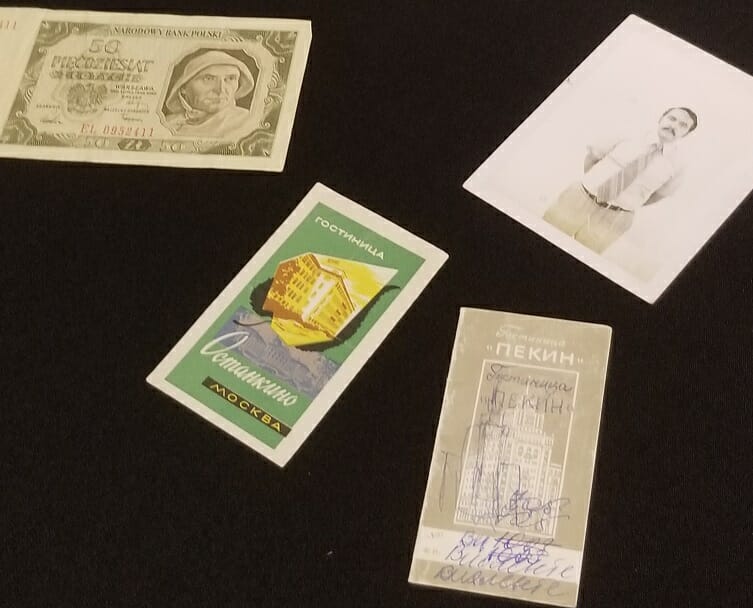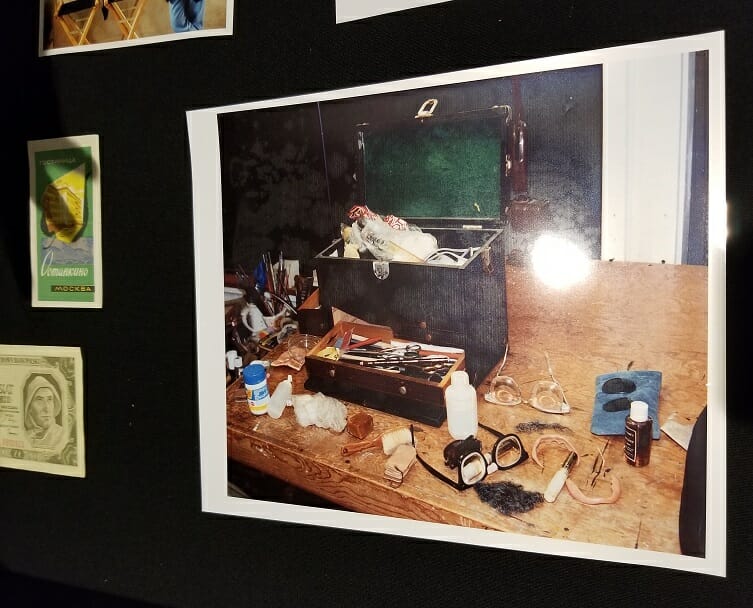It’s easy to watch a spy movie and scoff at the Hollywood jargon and spy gadgets. But as it turns out, there’s a good reason that we see these things in everything from James Bond novels to “Spy Hard.” They’re indispensable tools in the spy arsenal. The Moscow Rules, the fourth and final book by CIA super-couple Jonna and Tony Mendez, shows just how much gadgets and spy jargon were a part of real-life espionage in Cold War Moscow.
At a recent talk at the new International Spy Museum, Jonna explained the high stakes of the CIA’s work in Moscow during the Cold War. “Our mission was very simple – whether we were Moscow or anywhere else in a foreign country. We were collecting foreign intelligence for our policy makers. We were interested in information about plans and intentions of our enemies. We needed to get that information by whatever means we could.”
And in the stifling Russian capital where the KGB relentlessly tailed, bugged, and stalked all Americans, this was no easy task. Jonna and her late husband Tony served that mission through their work with the Office of Technical Service (OTS). Staffed by engineers, electricians, battery researchers, inventors, tinkerers, and magicians, OTS provided technical support to spies on the ground. Camera pens, elaborate disguises, pop-up agents. OTS did it all.
The book provides an excellent look at the real-life truths of espionage, including an inside look at the spy gear and lingo that defined life in Cold War Moscow. Here are a few fun takeaways from the spy’s playbook:
“Pocket Litter”
Any spy undercover in the field has a fake identity – their “cover” to explain who they are and why they are in that location. As you can imagine, being an American in Moscow at the height of the Cold War would bear an explanation. So spies carried around “pocket litter,” or things that corroborated their fake identities. For example, if you were pretending to be an English teacher at a local college, you might carry around a school ID, a pocket notebook, a library card, and a falsified passport.
Attendees to the discussion at the Spy Museum were treated to an up-close look at Tony’s original pocket litter from his time in Moscow (see below). The museum also features some pocket litter from Mendez on his history-making mission to rescue six American hostages from Iran. It was this harrowing mission that inspired the Mendez’ book, “Argo,” and the Oscar-winning film starring Ben Affleck.
“Working in the gaps”
No surveillance technique is foolproof. Mendez explains at length in the book just how closely the KGB trailed all Americans in Moscow.
“Surveillance in Moscow, against Americans in general…was like a smothering embrace,” Mendez explained to the Spy Museum crowd. “You couldn’t do anything without surveillance. If you were at home in your apartment, there were bugs in the walls…If you were in your car, they were tailing you. They had teams – they would rotate cars so they were with you wherever you went.”
So if spies wanted to meet up with a source or deliver information, they needed to “work in the gaps,” or find the momentary breaks where the KGB could not see them. For example, Mendez explained that making two right turns while driving created just enough of a gap to get something done. On the first turn, an agent might be able to sneak out of the passenger’s seat of the car. As the car turned again, another person could replace them in the passenger seat without tipping off the KGB tailers.
“Jack in the Box” (JIB)
Using his contacts in the magic and Hollywood communities, Tony Mendez developed the “Jack in the Box” as a way to help agents “work in the gaps.” The Jack in the Box was essentially a blow up doll contained in a suitcase that agents could deploy to fool KGB surveillance. Let’s say two agents were driving in a car and one needed to hop out to meet with a source. Their tailers would immediately notice if one person were missing. But if the passenger hopped out at that first right turn, then the other agent deployed the Jack in the Box, by the time the KGB regained their vision of the vehicle, the blow up doll made it appear that the original agent was still present in the passenger seat.
For its simplicity, the Jack in the Box took a lot of trial and error – some quite funny. For example, the suitcase originally had to carry both the doll and a tank of gas to blow it up – creating a mighty heavy suitcase. What’s more, the gas came out of the tank at such a cold temperature that it would freeze the plastic doll, causing them to explode into a thousand shards of plastic. Funniest of all, the first Jacks in the Box were made from blow up dolls procured from “adult entertainment” stores. As the agents struggled with the dolls freezing and breaking, they were faced with the unenviable task of returning to the stores to buy the dolls in embarrassing quantities.
“Getting black”
As anyone can imagine and the book reiterates, the surveillance of Americans in Cold War Moscow was never-ending. In order for spies to get the information they needed, they needed to either fool their surveillance with tricks like “working in the gaps” or the “Jack in the Box.” Or they needed to “get black,” spy lingo for shaking surveillance entirely. Agents might only “get black” for moments at a time, and usually only after a long, trying test of nerves. Agents might have to take their KGB tails on hours-long wild goose chases before finally being able to disappear long enough to get black and meet a source, make a dead drop, or whatever else couldn’t be seen by prying Russian eyes.
“Disguise on the Run”
One of Tony and Jonna Mendez’ most amazing contributions to the CIA was their development of practical and convincing disguises. Up until then, the CIA had considered disguises to be somewhat hokey. As Jonna explained to the audience, a lot of male agents didn’t want to wear a wig or dress like a woman; there was a visceral dislike that had to be overcome. But overcome it they did. Working along with his Hollywood make-up artists and magicians, Mendez was able to craft the “Disguise on the Run,” which was a self-contained costume that could transform a person’s entire appearance in about 45 seconds – all just while walking down the street.
In order to sell the Disguise on the Run, Mendez had to give a demonstration to the higher ups at the CIA. As it so happens, Jonna – who would someday be his wife – was there to witness the demonstration. She explained how in less than a minute, Tony transformed himself from a businessman wearing a full suit and carrying an attache case, to a little old granny pushing a grocery cart.
Both Jonna and Tony were such exceptional masters of disguise that they both served as CIA’s Chief of Disguise at different points in their careers. In fact, Jonna met President Bush in the Oval Office donning a mask, then dramatically revealed herself; even the President of the United States -and former CIA Director – was fooled. Attendees got to see images of that meeting, along with Tony’s disguise kit (see below).
Who needs James Bond? Real spies are cool enough.






